Business
Solution For the Earth DYC
Solution For the Earth DYC




In the US EPA (certified 21164-3), chlorine dioxide does not generate THMs or HAAs, which are carcinogens when purifying drinking water. Therefore, as a safe disinfectant and a substitute for chlorine, it is accepted as a drinking water treatment, and products with a purity of 90% or higher are used in 700 to 900 water purification plants in the United States.
In Europe, chlorine dioxide is used as a drinking water disinfectant which is managed according to the regulations of the Biocidal Product Directive (98/8/EC). In May 2000, the guidelines were distributed to EU member states, and classified the disinfectants for drinking water in main category 1 of Annex V and general biocide products (Product-Type 5). Chlorine dioxide is used in more than 500 water purification plants in countries such as Germany, France and Italy, and many water purification plants in Europe are currently converting to chlorine dioxide treatment technology to minimize disinfection by-products. In France, chlorine dioxide is used to control organic substances and manganese, and in summer, it is used for the purpose of enhancing disinfection effect. Also in Germany, it is used as a post-treatment disinfectant.
In Japan, chlorine dioxide is mainly used for water treatment. In accordance with the provisions of Article 5, Paragraph 4 of the Waterworks Act (Showa 32 Act No. 177), chlorine dioxide was permitted as a water treatment agent for water facilities, and the usage standard is set at 2.0 mg or less per 1 liter during water purification or water treatment. In addition, according to the hygiene standards of the swimming pool (no compulsory standards), the chlorine dioxide concentration is 0.1 mg/ℓ or more, 0.4 mg/ℓ or less, and the chlorine acid concentration is 1.2 mg/ℓ or less when disinfection is performed with chlorine dioxide instead of chlorine disinfectant.
In Korea, water treatment agents are managed in accordance with the standards and labeling of water treatment agent in the Ministry of Environment Notification No. 187 (December 9, 2002). In domestic, chlorine dioxide was recognized as a water treatment agent (sterilization and disinfectant) under the Drinking Water Management Act issued by the Ministry of Environment in 1999 (Recommended using less than 1ppm). Among the water treatment ingredients that can be used in domestic, there are highly bleached powder, liquid chlorine, sodium hypochlorite, chlorine dioxide, and ozone as disinfectants. The disinfectant of these water treatment agents which is used to sterilize microorganisms in water and prevent contamination during the water supply process, is mainly chlorine. However, due to the recent generation of THMs during water treatment procedure and the generation of odors by phenol, there is a trend of using chlorine dioxide and ozone in parallel.
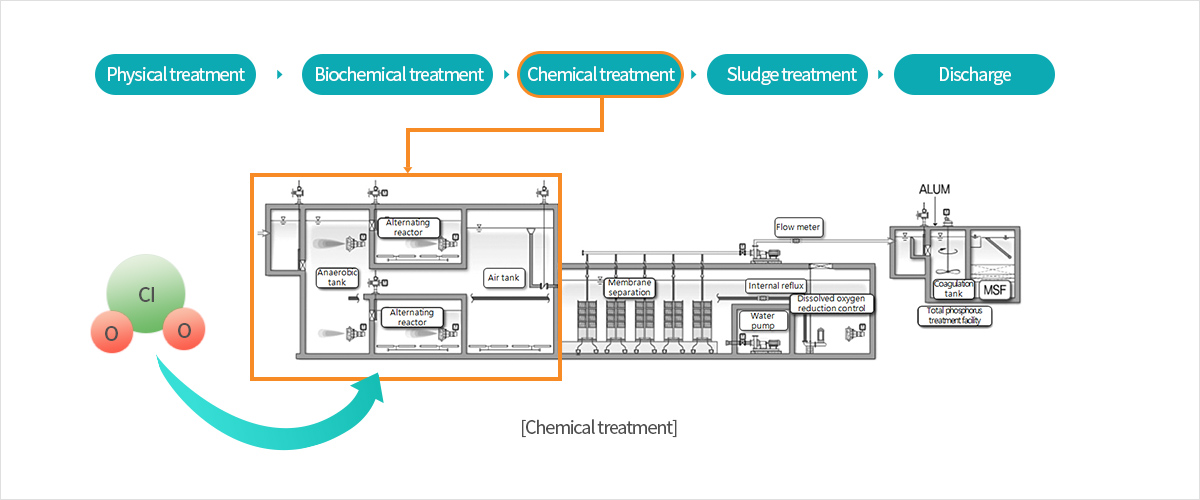

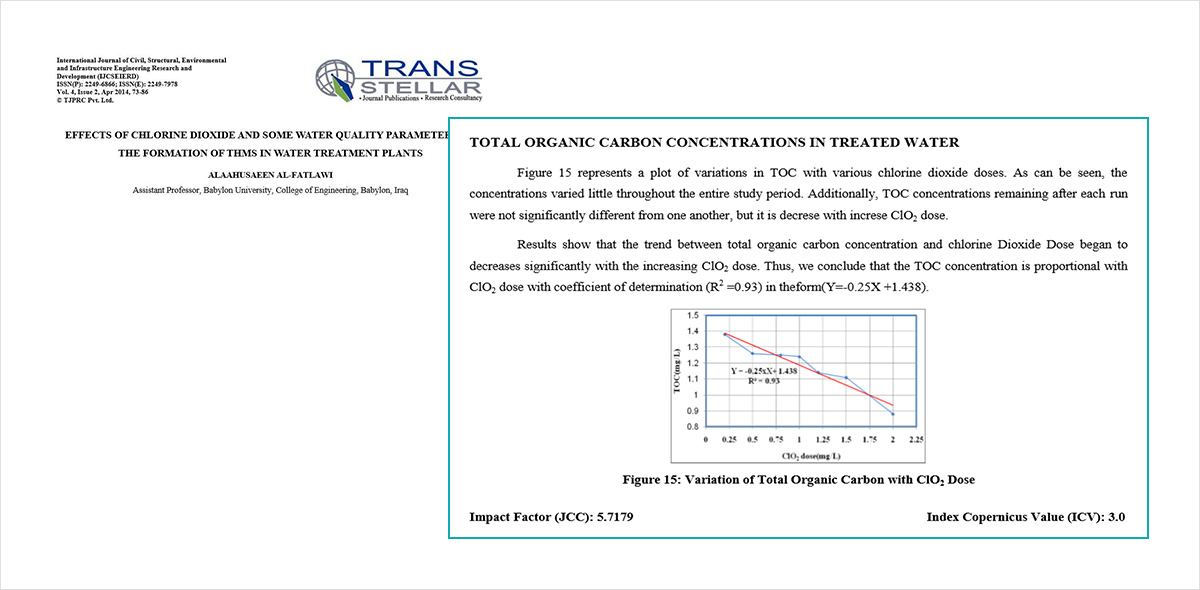

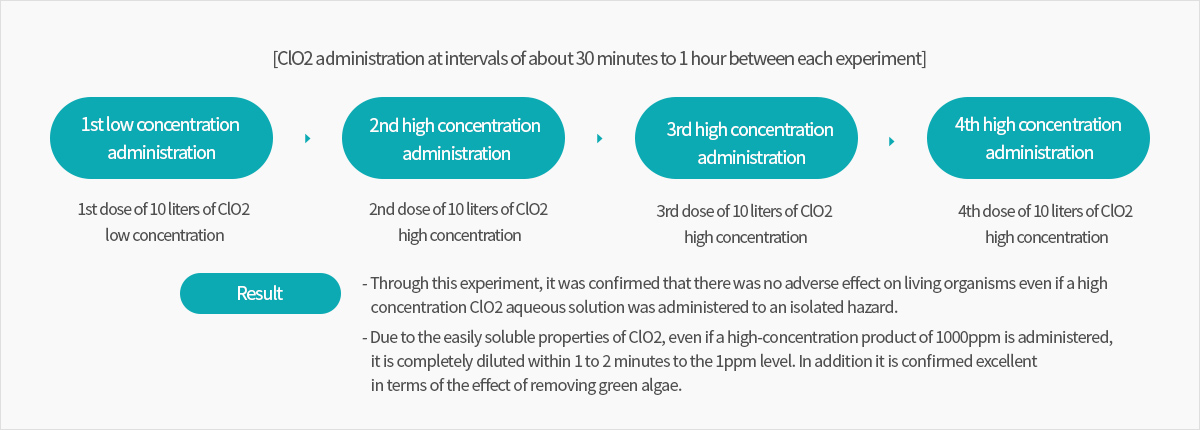

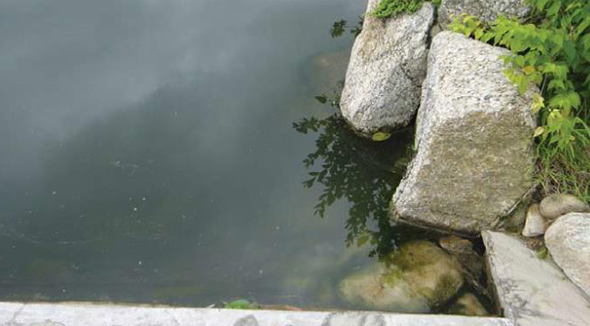 Before ClO2 administration
Before ClO2 administration
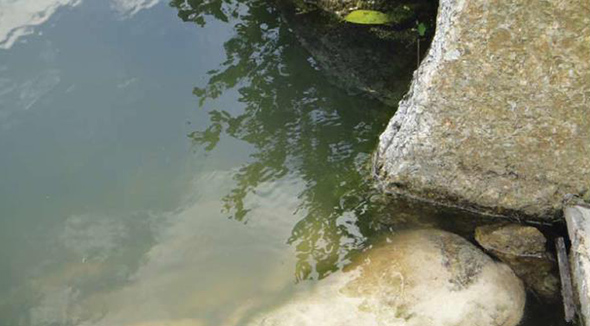 After ClO2 administration
After ClO2 administration
Test Contents: Using ClO2 to derive significant results in reducing chemical pollution as a result of sludge leachate treatment of industrial wastewater
| Div. | Control | Primary treatment | Secondary treatment |
|---|---|---|---|
| Figuration |  |
 |
 |
| COD (mg/L) | 4,700 | 2,910 (↓ 40%) | 1,560 (↓ 70%) |
| SS (Turbidity) | 1.337 | 465 (↓ 70%) | 83 (↓ 94%) |
| Phenol (mg/L) | 204.2 | 17.87 (↓ 92%) | 0.35 (↓ 99%) |
| Cyanide (mg/L) | 0.26 | 0.01(↓ 96%) | 0.01 미만 (↓ 99%) |
| Div | Control | Treatment |
|---|---|---|
| Figuration | 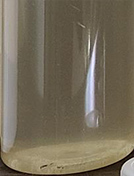 |
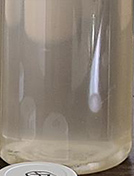 |
| COD (mg/L) | 61.3 | 47.8 (↓ 22%) |
| TOC (mg/L) 3 | 35.9 | 27.8 (↓ 23%) |